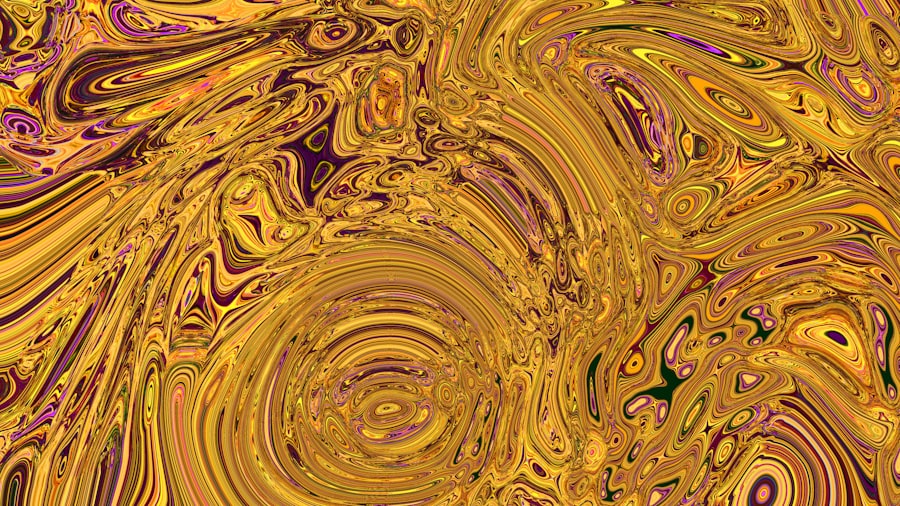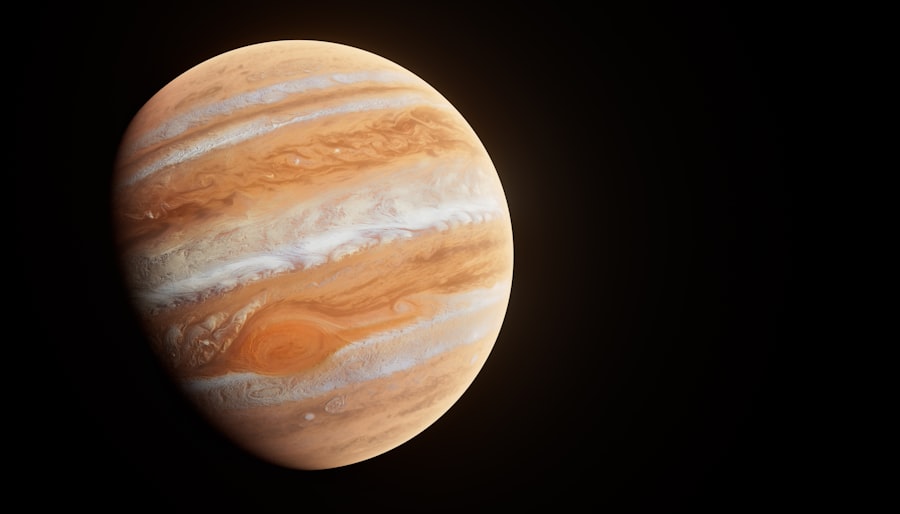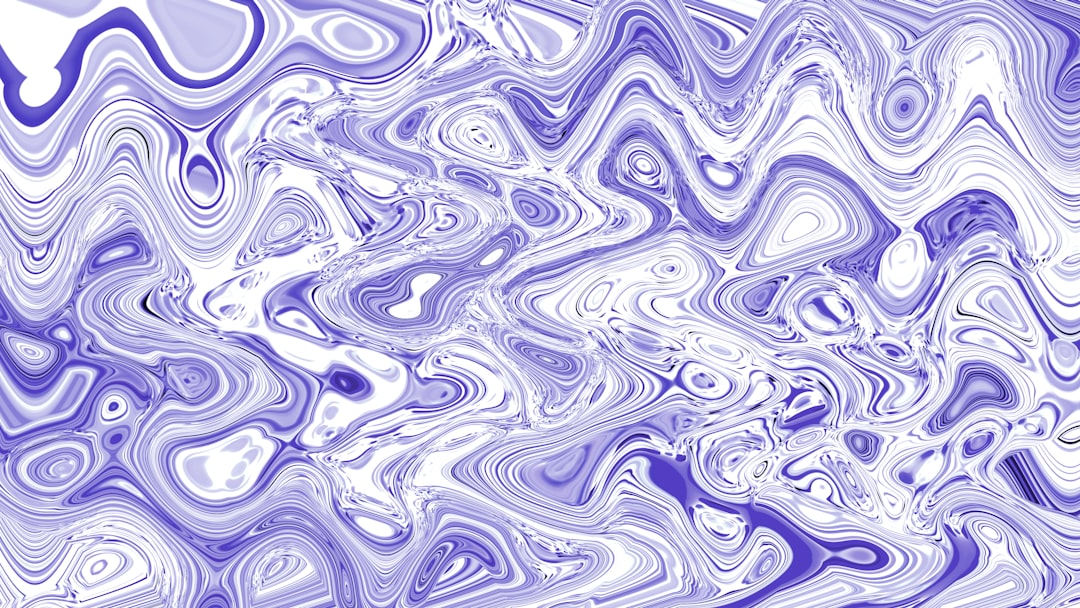Jupiter, the largest planet in the solar system, has long captivated scientists and astronomers with its complex atmospheric phenomena and dynamic interior structure. Among the many intriguing features of this gas giant are its torsional oscillations, which are oscillatory movements that occur within its massive atmosphere and potentially extend into its interior. These oscillations are not merely a curiosity; they provide critical insights into the planet’s internal dynamics, magnetic field, and overall evolution.
Understanding these oscillations can help researchers piece together the puzzle of how Jupiter formed and how it continues to evolve over time. The study of torsional oscillations on Jupiter has gained momentum in recent years, thanks to advancements in observational technology and theoretical modeling. As researchers delve deeper into the mechanisms behind these oscillations, they uncover a wealth of information about the planet’s structure and behavior.
This article aims to explore the theoretical background, observational evidence, causes, and implications of torsional oscillations on Jupiter, as well as their significance in the broader context of planetary science.
Key Takeaways
- Jupiter’s torsional oscillations are a key aspect of the planet’s interior dynamics, with implications for planetary formation and evolution.
- Observational evidence of torsional oscillations on Jupiter has been gathered through techniques such as helioseismology and spacecraft missions.
- Theoretical background and current research on Jupiter’s torsional oscillations provide insights into the causes and impact of these phenomena.
- Understanding Jupiter’s torsional oscillations can offer comparisons with other planets and contribute to our knowledge of planetary dynamics.
- Future prospects for studying Jupiter’s torsional oscillations hold promise for advancing planetary science and our understanding of the solar system.
Theoretical Background of Torsional Oscillations
Torsional oscillations are a type of wave motion that can occur in rotating fluids, such as the gaseous atmosphere of Jupiter. These oscillations arise from the interplay between the planet’s rotation and its internal fluid dynamics. Theoretical models suggest that these oscillations can be characterized by their frequency, amplitude, and spatial distribution.
The fundamental principles governing these oscillations are rooted in fluid dynamics and magnetohydrodynamics, which describe how magnetic fields interact with electrically conductive fluids. In the case of Jupiter, the planet’s rapid rotation plays a crucial role in shaping its torsional oscillations. The Coriolis effect, a consequence of rotation, influences the movement of atmospheric currents and contributes to the formation of large-scale waves.
These waves can propagate through the atmosphere and potentially reach deeper layers of the planet’s interior. Theoretical studies have indicated that torsional oscillations may be linked to various phenomena, including changes in wind patterns, temperature fluctuations, and even magnetic field variations.
Observational Evidence of Torsional Oscillations on Jupiter

Observational evidence for torsional oscillations on Jupiter has been gathered through various means, including ground-based telescopes and space missions. One of the most significant sources of data has come from NASA’s Juno spacecraft, which has been orbiting Jupiter since 2016.
Data collected by Juno has shown that Jupiter’s atmospheric bands exhibit periodic variations in their velocities, suggesting the presence of oscillatory motions. These observations align with theoretical predictions regarding the behavior of torsional oscillations. Additionally, ground-based observations using high-resolution imaging techniques have captured changes in Jupiter’s cloud patterns that further support the existence of these oscillations.
The combination of space-based and terrestrial observations has allowed scientists to build a more comprehensive understanding of how torsional oscillations manifest on this giant planet.
Understanding the Causes of Torsional Oscillations
| Causes of Torsional Oscillations | Impact |
|---|---|
| Torsional stiffness mismatch | Increased mechanical stress |
| Resonance with natural frequencies | Amplification of oscillations |
| Damping inefficiency | Prolonged oscillation decay |
| External torque disturbances | Unpredictable oscillation patterns |
The causes of torsional oscillations on Jupiter are multifaceted and involve a combination of factors related to the planet’s rotation, atmospheric dynamics, and internal structure. One primary driver is the differential rotation observed in Jupiter’s atmosphere, where different latitudinal bands rotate at varying speeds. This differential rotation creates shear forces that can lead to the development of oscillatory motions.
Moreover, interactions between atmospheric currents and magnetic fields play a significant role in generating torsional oscillations. Jupiter’s strong magnetic field interacts with its electrically conductive atmosphere, leading to complex feedback mechanisms that can amplify or dampen oscillatory motions. Additionally, thermal gradients within the planet’s interior may contribute to these oscillations by influencing convective processes that drive atmospheric dynamics.
Understanding these causes is essential for unraveling the intricate web of interactions that govern Jupiter’s behavior.
Impact of Torsional Oscillations on Jupiter’s Interior Dynamics
The impact of torsional oscillations extends beyond the atmosphere and into Jupiter’s interior dynamics. These oscillatory movements can influence heat transfer processes within the planet, affecting its thermal evolution over time. As torsional oscillations propagate through different layers of Jupiter’s interior, they may alter convection patterns and contribute to the redistribution of heat.
Furthermore, torsional oscillations may have implications for Jupiter’s magnetic field generation. The dynamo effect, responsible for creating a planet’s magnetic field, is closely tied to fluid motions within its interior. By studying torsional oscillations, researchers can gain insights into how these motions contribute to the dynamo process and how they may affect the stability and strength of Jupiter’s magnetic field over geological timescales.
Comparison of Torsional Oscillations on Jupiter with Other Planets

When comparing torsional oscillations on Jupiter with those observed on other planets, distinct differences emerge that highlight the unique characteristics of each celestial body. For instance, Saturn, another gas giant in our solar system, also exhibits torsional oscillations; however, their nature and behavior differ due to variations in atmospheric composition and rotational dynamics. Saturn’s rings and its less intense magnetic field create a different environment for torsional motions compared to Jupiter.
In contrast, terrestrial planets like Earth do not exhibit significant torsional oscillations due to their solid surfaces and slower rotation rates. Instead, Earth experiences other types of wave phenomena related to its atmosphere and oceans. By studying these differences across various planets, scientists can better understand how planetary characteristics influence internal dynamics and atmospheric behavior.
Current Research and Studies on Jupiter’s Torsional Oscillations
Current research on Jupiter’s torsional oscillations is vibrant and ongoing, driven by advancements in observational technology and theoretical modeling techniques. Scientists are utilizing data from Juno alongside ground-based observations to refine their understanding of these oscillatory motions. Recent studies have focused on characterizing the frequency and amplitude of torsional oscillations while exploring their relationship with other atmospheric phenomena.
Moreover, researchers are employing numerical simulations to model the effects of torsional oscillations on Jupiter’s interior dynamics. These simulations allow scientists to test various hypotheses regarding the causes and consequences of these oscillatory motions. As new data continues to emerge from ongoing missions and studies, researchers are poised to make significant strides in unraveling the complexities surrounding Jupiter’s torsional oscillations.
Methods and Techniques Used to Study Torsional Oscillations on Jupiter
To study torsional oscillations on Jupiter effectively, scientists employ a range of methods and techniques that encompass both observational and computational approaches. High-resolution imaging from ground-based telescopes enables researchers to capture detailed images of Jupiter’s atmosphere, revealing patterns indicative of oscillatory behavior. Spectroscopy is another valuable tool that allows scientists to analyze the composition and dynamics of atmospheric gases, providing insights into how these gases interact during torsional motions.
In addition to observational techniques, numerical modeling plays a crucial role in understanding torsional oscillations. Researchers use computational fluid dynamics simulations to replicate the conditions present within Jupiter’s atmosphere and interior. By varying parameters such as rotation rate and temperature gradients, scientists can explore how different factors influence torsional motions.
This combination of observational data and computational modeling provides a comprehensive framework for studying these complex phenomena.
Implications of Torsional Oscillations for Planetary Formation and Evolution
The implications of understanding torsional oscillations extend beyond Jupiter itself; they offer valuable insights into planetary formation and evolution processes across the solar system. By studying how these oscillatory motions arise and evolve over time, scientists can gain a deeper understanding of how gas giants like Jupiter formed from primordial material in the early solar system. Furthermore, insights gained from studying torsional oscillations may shed light on the conditions necessary for sustaining atmospheres around gas giants.
Understanding how internal dynamics influence atmospheric behavior can inform models predicting how exoplanets with similar characteristics might evolve over time. As researchers continue to explore these connections, they contribute to a broader understanding of planetary science as a whole.
Future Prospects for Studying Torsional Oscillations on Jupiter
The future prospects for studying torsional oscillations on Jupiter are promising, with several upcoming missions and technological advancements poised to enhance our understanding further. Future space missions aimed at exploring gas giants may provide new data that could refine existing models or reveal previously unknown aspects of torsional motions. Additionally, advancements in observational techniques will likely enable scientists to capture even more detailed images and spectra of Jupiter’s atmosphere.
As data collection methods improve, researchers will be better equipped to analyze complex interactions within Jupiter’s atmosphere and interior dynamics. The continued collaboration between observational astronomers and theoretical physicists will be essential for unlocking the mysteries surrounding these fascinating phenomena.
Conclusion and Implications for Planetary Science
In conclusion, Jupiter’s torsional oscillations represent a captivating area of study within planetary science that holds significant implications for understanding not only this gas giant but also other celestial bodies across the universe. Through a combination of theoretical modeling, observational evidence, and ongoing research efforts, scientists are gradually unraveling the complexities surrounding these oscillatory motions. The insights gained from studying torsional oscillations contribute to a broader understanding of planetary formation processes, internal dynamics, and atmospheric behavior across various celestial bodies.
In recent studies, scientists have delved into the fascinating phenomenon of Jupiter’s torsional oscillations, which are essentially waves that travel through the planet’s interior, affecting its magnetic field and atmospheric dynamics. These oscillations provide crucial insights into the internal structure and dynamics of the gas giant. For those interested in exploring more about this topic, a related article can be found on the XFileFindings website. This article discusses the implications of these oscillations on our understanding of Jupiter’s magnetic field and how they might influence future research. You can read more about it by visiting this link.
WATCH THIS! 🧮🔭The Lost Math That Proves Jupiter Is A Giant Alien Machine
FAQs
What are Jupiter’s torsional oscillations?
Jupiter’s torsional oscillations are a type of wave motion that occurs in the planet’s interior. These oscillations are caused by the differential rotation of Jupiter’s atmosphere and its interior, and they can provide valuable insights into the planet’s internal structure and dynamics.
How are Jupiter’s torsional oscillations studied?
Scientists study Jupiter’s torsional oscillations by analyzing the planet’s gravitational field and its effect on the orbits of spacecraft and natural satellites. By measuring the subtle changes in these orbits, researchers can infer the presence and characteristics of the oscillations within Jupiter.
What do Jupiter’s torsional oscillations reveal about the planet?
Studying Jupiter’s torsional oscillations can provide information about the planet’s interior dynamics, including its rotation rate, the depth of its atmospheric jets, and the nature of its core. These insights can help scientists better understand the formation and evolution of gas giant planets.
How do Jupiter’s torsional oscillations compare to Earth’s tides?
While Jupiter’s torsional oscillations are caused by the planet’s differential rotation, Earth’s tides are primarily driven by the gravitational pull of the Moon and the Sun. Both phenomena involve wave-like motions within the respective bodies, but they arise from different physical mechanisms.
